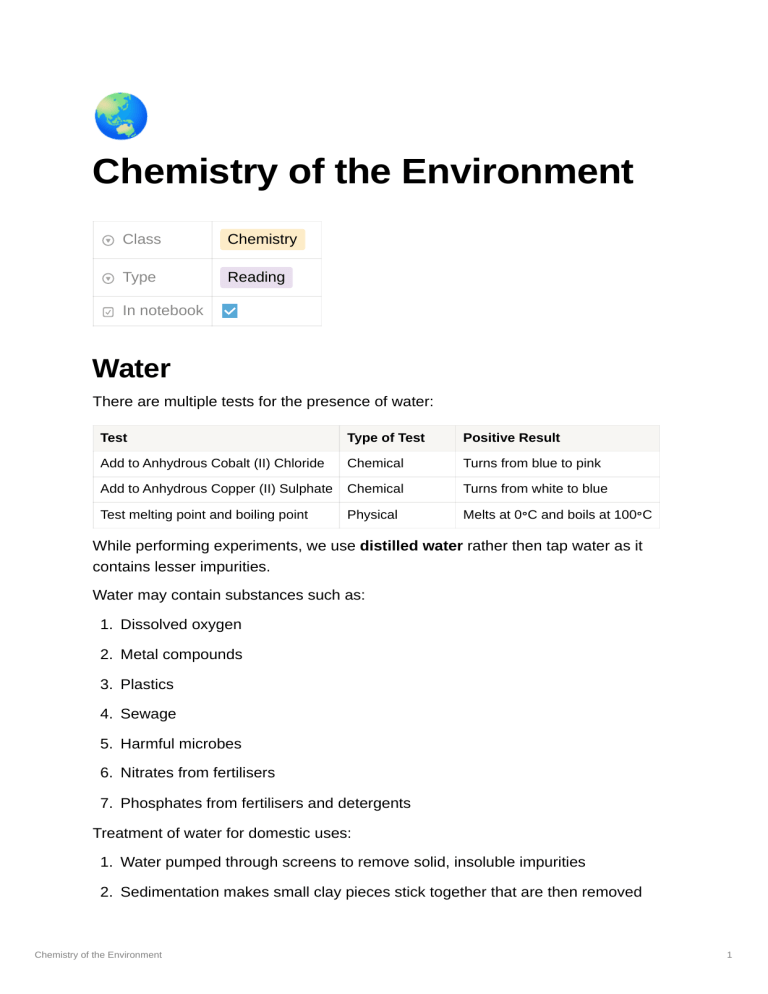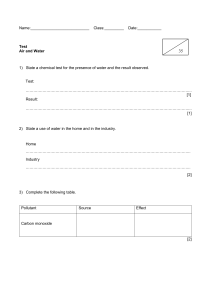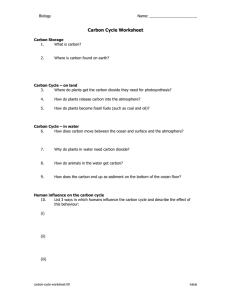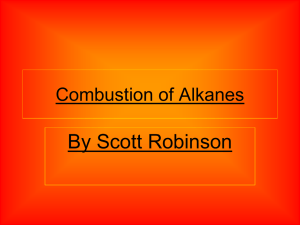
🌏 Chemistry of the Environment Class Chemistry Type Reading In notebook Water There are multiple tests for the presence of water: Test Type of Test Positive Result Add to Anhydrous Cobalt (II) Chloride Chemical Turns from blue to pink Add to Anhydrous Copper (II) Sulphate Chemical Turns from white to blue Test melting point and boiling point Physical Melts at 0॰C and boils at 100॰C While performing experiments, we use distilled water rather then tap water as it contains lesser impurities. Water may contain substances such as: 1. Dissolved oxygen 2. Metal compounds 3. Plastics 4. Sewage 5. Harmful microbes 6. Nitrates from fertilisers 7. Phosphates from fertilisers and detergents Treatment of water for domestic uses: 1. Water pumped through screens to remove solid, insoluble impurities 2. Sedimentation makes small clay pieces stick together that are then removed Chemistry of the Environment 1 3. Filtration through layers of sand and gravel to remove larger, insoluble debris 4. Carbon added to remove taste and odour 5. Chlorination (chlorine gas bubbled through the water) to kill any pathogens/microbes Fertilisers Fertilisers are substances added to the soil and taken up by plants to increase crop yield. They contain ammonium salts and nitrates. NPK → Nitrogen (chlorophyll and protein synthesis, promotes healthy leaves), Phosphorus (promotes healthy roots), Potassium (promotes growth and healthy fruits and flowers) Reaction with any alkali substance (except ammonium) displaces ammonia from its compound; e.g.: Sodium Hydroxide + Ammonium Chloride → Sodium Chloride + Ammonia (g) + Water Air Quality and Climate Composition of Clean air Clean air primarily consists of nitrogen gas (78%) and oxygen gas (21%). Secondarily it consists of noble gases e.g. Argon and carbon dioxide Chemistry of the Environment 2 (together = approx. 1%).n Impact of Greenhouse Gases 1. Short wavelength radiation from the Sun reaches the Earth's surface 2. Some thermal energy is absorbed and heats oceans/lands 3. Earth radiates some thermal energy as more prolonged wavelength radiation 4. Greenhouse gases absorb some of the infrared radiation and re-emit in all directions 5. Some infrared radiation comes back to Earth's surface, and this reduces the heat loss to space and leads to global warming Air Pollutants and their adverse effects Pollutant Source Negative Impact Carbon monoxide [CO] incomplete combustion of carbon containing fuels binds to haemoglobin in blood, constricting oxygen supply to body cells (carbon monoxide poisoning) Carbon dioxide [CO₂] complete combustion of carbon containing fuels increased global warming leads to climate change Methane [CH₄] decomposition of vegetation and waste gases from digestion in animals increased global warming leads to climate change Sulphur dioxide [SO₂] combustion of fossil fuels containing sulphur compounds causes acid rain Chemistry of the Environment 3 Pollutant Source Negative Impact Nitrogen oxides [NO₂, NO₃] high temperatures that trigger reaction between N₂ and O₂ (from air) causes respiratory problems and photochemical smog, contributes to acid rain Lead compounds combustion of leaded fuels damages brain and nerve cells in young children Strategies to reduce the effects of Environmental Issues Climate change: planting trees, reducing livestock farming, decreasing the use of fossil fuels, increasing the use of hydrogen and renewable energy (e.g. wind, solar, geothermal) Acid rain: use of catalytic converters in vehicles, reducing emissions of sulphur dioxide by using low-sulphur fuels and flue gas desulphurisation with calcium oxide Photosynthesis Photosynthesis is the reaction between carbon dioxide and water to produce glucose and oxygen in the presence of chlorophyll and using energy from light. 💡 Word equation: Carbon Dioxide + Water → Chlorophyll + Oxygen (Balanced) Symbol Equation: 6CO₂ + 6H₂O → C₆H₁₂O₆ + 6O₂ Chemistry of the Environment 4






